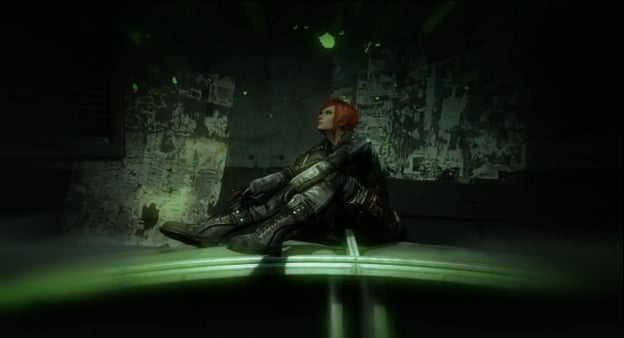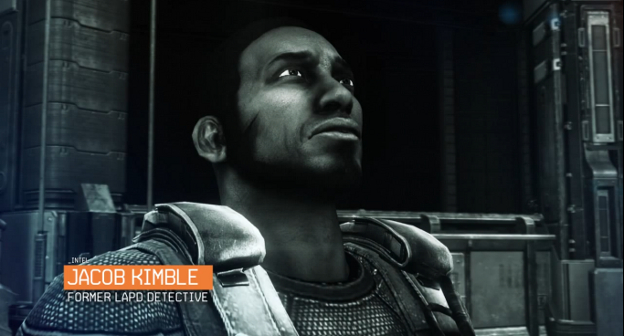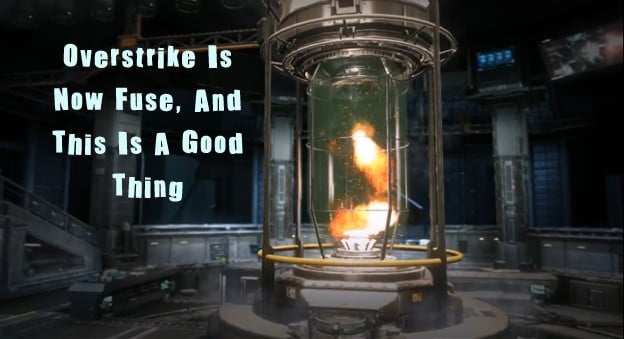Overstrike Is Now Fuse, And This Is A Good Thing
Insomniac Games spawned some controversy back in September when they revealed that their cartoony spy-flick of a game, Overstrike, was now a far more realistic shooter called Fuse. It’s probably fair to say that quite a few people were pretty confused by this decision.
Now, I got my hands on Fuse shortly before that video went live, and I explained to the angry fans out there that the game is indeed still a blast to play. (You can read more about that in my hands-on impressions article .)
Still, Insomniac wanted to reassure me that they were on the right track with Fuse, so I sat on a conference call with Ted Price, Insomniac’s CEO, and Doug Sheahan, Senior Gameplay Programmer on Fuse. During the call, we talked about the fan reaction to the changes (which wasn’t exactly positive), and why these changes were made. Of course, the word “visceral” was thrown around a lot. You see, the new, less cartoony approach was done as a reaction to a new approach to weapon design in the game. Weapons that can murder people in crazy violent ways (by tearing them apart with black holes or pinning them to walls with glowing hot bolts, for example) just wouldn’t fit that old lighthearted art direction. With Fuse, Insomniac wanted to take liberties that would only be allowed under an M rating.
Additionally, Price explained that Fuse, the game’s titular alien element that powers this weaponry, was central to these changes. In his words: “Finding Fuse and latching onto it was the defining moment.” That was when it became clear “how Fuse drives story and gameplay at the same time.”
And I think that’s good. During my own hands-on time last month, I found the over-the-top weaponry to be an absolute joy to play around with. And Insomniac has always been a developer that’s been incredibly into making absurdly powerful weaponry. Just look at Ratchet & Clank and Resistance as examples.
Still, fans have been struggling to understand these changes. In Price’s words, “It came as a real surprise to people that we had been making several changes to the game.”
But it’s not unusual for games to drastically change during development. Price went on, “Every intellectual property changes along the way. Fuse is absolutely no exception. Ratchet was totally different when it started. So was Resistance. Fuse made a very public shift.” And that’s really the essential component here: Whereas this type of change is common in the industry, it’s less common for fans to actually see it happen. Fuse, under the title Overstrike, was very public at a very early stage. A lot of what we saw in the original Overstrike trailer just didn’t work and had to be changed.
And as more of the details of Fuse go public, the fan reaction “continues to evolve as people see more and more of the game.” These fundamental changes may be hard to accept for those who got all excited for a Team Fortress-style spy thriller game, but they’ve been consciously made to benefit the game. As Price explained it: “The game is really what’s key. At the core, the game is about four players working together and doing some pretty unique stuff for a third-person shooter.”

We also got to talk a bit about Fuse’s progression system, which was explained more fully in an eighteen-minute video released earlier today.
Each character in Fuse will have their own skill progression tree with four categories. Well, the word “tree” might not be the best description for this system; it’s probably better described as a wall that players build block by block. Each of these blocks can be unlocked once the block above it has had one skill point assigned to it, though a maximum of three points can be added to each block.
Now, multiple playthroughs will be required in order to unlock the full skill tree for any given character. Players who frequently “Leap,” Insomniac’s term for hopping between multiple characters, will obviously need to spend even more time in order to get any character to maximum.
But a second playthrough is not without its rewards. For example, there will be a harder difficulty level that will unlock after your first playthrough, which would simply be too hard for players without any upgrades.
And speaking of difficulty, Sheahan explained that Fuse is designed to be “hard but fair.”

That hasn’t been the easiest balance to maintain, especially when dealing with a game that allows both single-player and up-to-four-player co-op. “One of the big things with the weapon design was having them be slightly overpowered” without trivializing the difficulty. The goal here is that, in Sheahan’s words, “when you’re working with your teammates you feel powerful, but it’s not a cakewalk.”
In fact, he even told us that the team “actually had to make the game more challenging” because players were working together in ways that weren’t anticipated. It was, at times, surprising “how quickly they worked together,” which led to “a lot of emergent gameplay.” Using Naya, Fuse’s equivalent of a stealth character, for example, “people who cloak like to cloak and do some interesting things.”
Ultimately, I wouldn’t worry too much about Fuse. Insomniac’s been doing some really cool things with it, and I look forward to getting my hands on the final product when it launches next March. I guess what I’m trying to say is, stop complaining. Fuse is going to be great.
 | By Josh Wirtanen Editor / News Director Date: October 22, 2012 |
*The views expressed within this article are solely the opinion of the author and do not express the views held by Cheat Code Central.*
